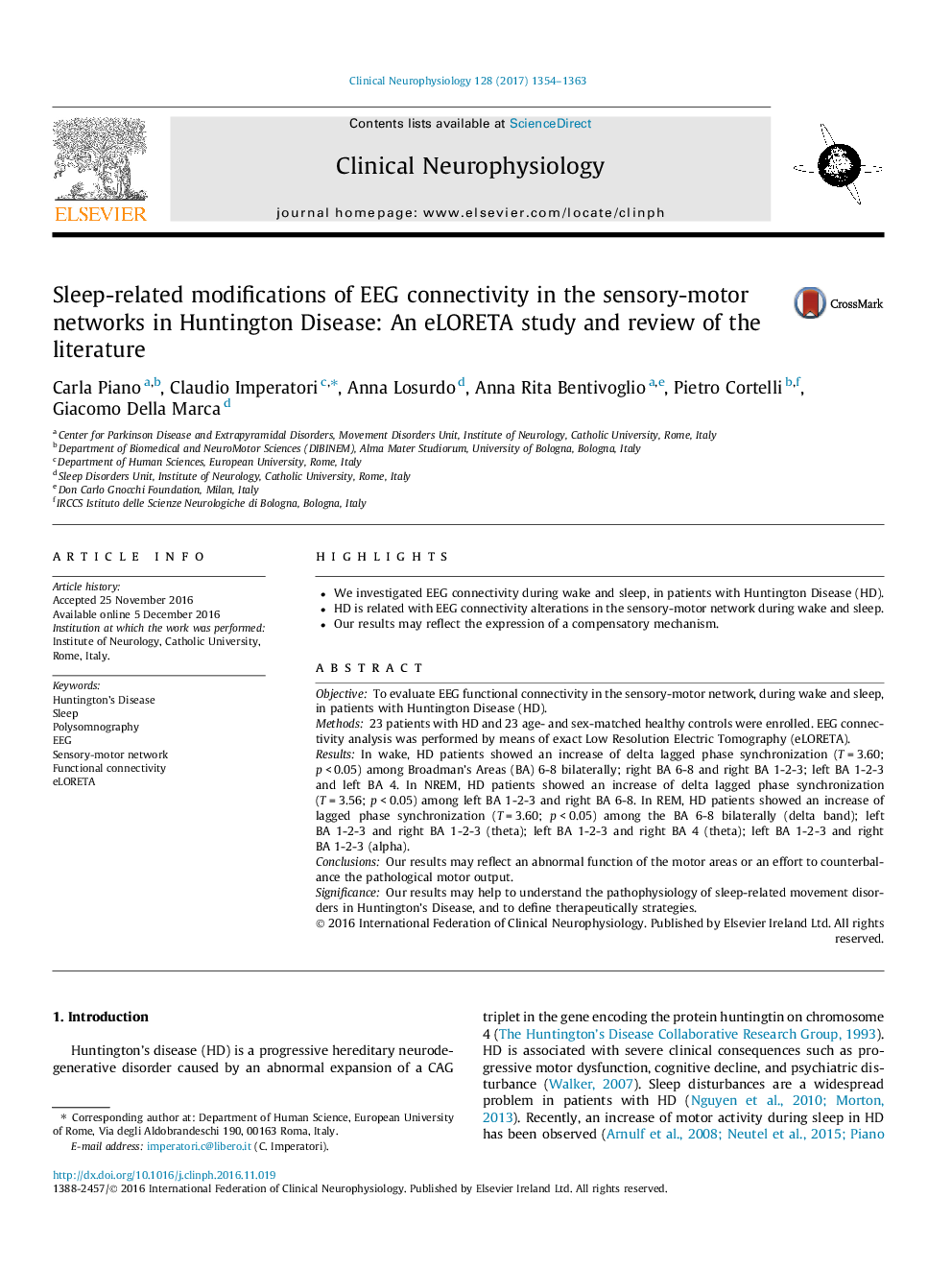| Article ID | Journal | Published Year | Pages | File Type |
|---|---|---|---|---|
| 5627834 | Clinical Neurophysiology | 2017 | 10 Pages |
â¢We investigated EEG connectivity during wake and sleep, in patients with Huntington Disease (HD).â¢HD is related with EEG connectivity alterations in the sensory-motor network during wake and sleep.â¢Our results may reflect the expression of a compensatory mechanism.
ObjectiveTo evaluate EEG functional connectivity in the sensory-motor network, during wake and sleep, in patients with Huntington Disease (HD).Methods23 patients with HD and 23 age- and sex-matched healthy controls were enrolled. EEG connectivity analysis was performed by means of exact Low Resolution Electric Tomography (eLORETA).ResultsIn wake, HD patients showed an increase of delta lagged phase synchronization (T = 3.60; p < 0.05) among Broadman's Areas (BA) 6-8 bilaterally; right BA 6-8 and right BA 1-2-3; left BA 1-2-3 and left BA 4. In NREM, HD patients showed an increase of delta lagged phase synchronization (T = 3.56; p < 0.05) among left BA 1-2-3 and right BA 6-8. In REM, HD patients showed an increase of lagged phase synchronization (T = 3.60; p < 0.05) among the BA 6-8 bilaterally (delta band); left BA 1-2-3 and right BA 1-2-3 (theta); left BA 1-2-3 and right BA 4 (theta); left BA 1-2-3 and right BA 1-2-3 (alpha).ConclusionsOur results may reflect an abnormal function of the motor areas or an effort to counterbalance the pathological motor output.SignificanceOur results may help to understand the pathophysiology of sleep-related movement disorders in Huntington's Disease, and to define therapeutically strategies.
